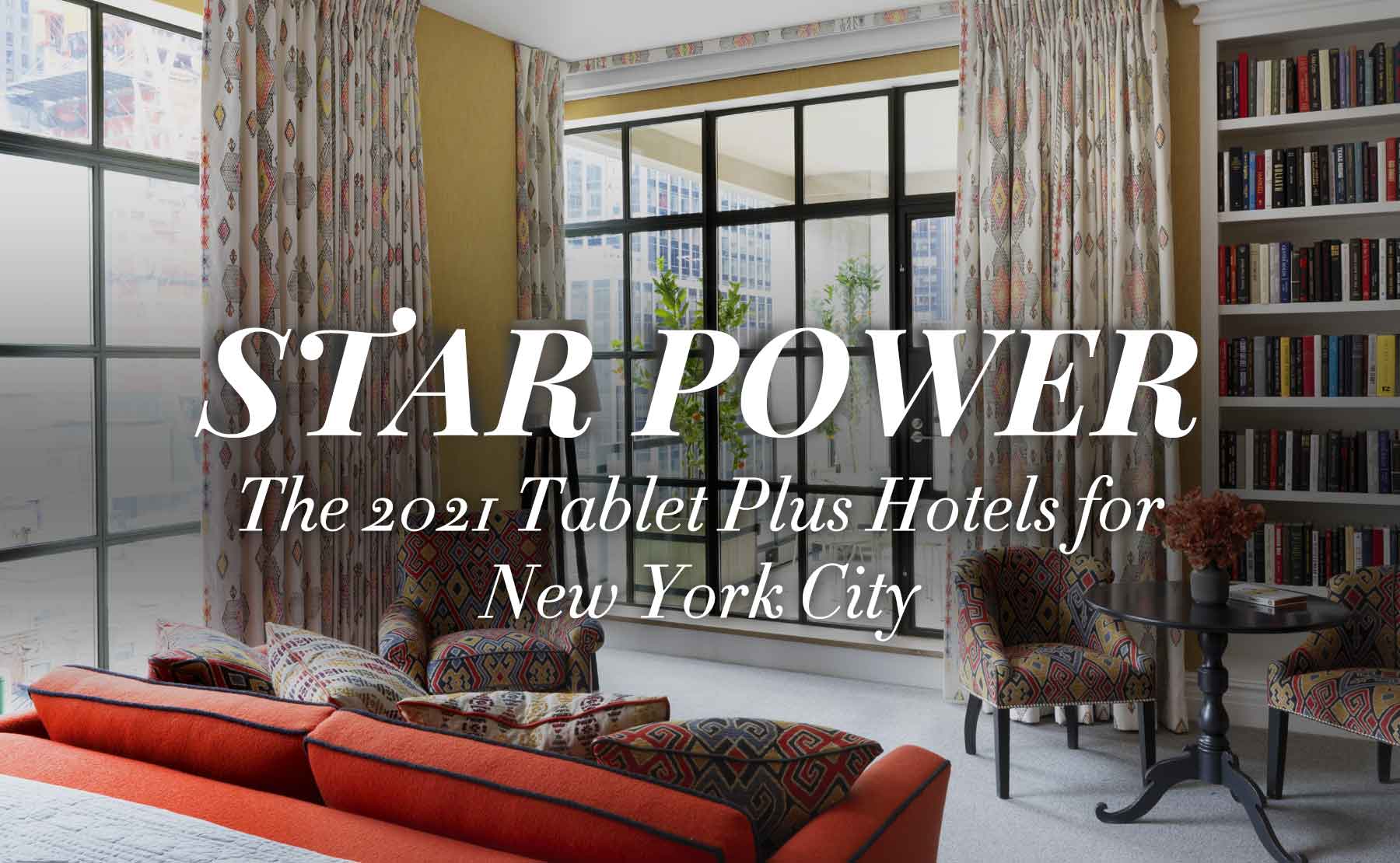
We’ve never been fans of the star-rating system used in the hotel industry. It rewards a type of traditional luxury that isn’t always everyone’s idea of a good time. If you’re taking a road trip through the American southwest, sometimes all you want is a place to rest your head. You don’t want fuss and formalities. On that kind of journey, a wonderfully refurbished roadside motel can be the equivalent of a seven-star experience.
At Tablet, we identify the hotels that most impress us across a range of styles and price points, from hip indie boutiques to grand old palaces. We have something for everyone, and for every kind of adventure. A hotel either has a distinct personality and delivers unforgettable stays to its guests — regardless of how much it costs — or it doesn’t. And if it doesn’t, you won’t find it on Tablet.
Our unique approach to curation is why Michelin made us the official hotel selection of their legendary MICHELIN Guide. Of course, Michelin’s restaurant rating system uses stars, but their methodology isn’t all that different from ours. Being awarded a star elevates a restaurant to the same lofty status achieved by the hotels we choose for inclusion on Tablet. The second and third stars resemble our Tablet Plus designation, which is reserved for truly exceptional properties that provide VIP upgrades and amenities to our Tablet Plus members (and good ol’ first-class hospitality to everyone else).
Tablet Plus hotels shine above the rest, and we’re happy to give them the recognition they deserve.
Here are the 2021 Tablet Plus hotels for New York City:
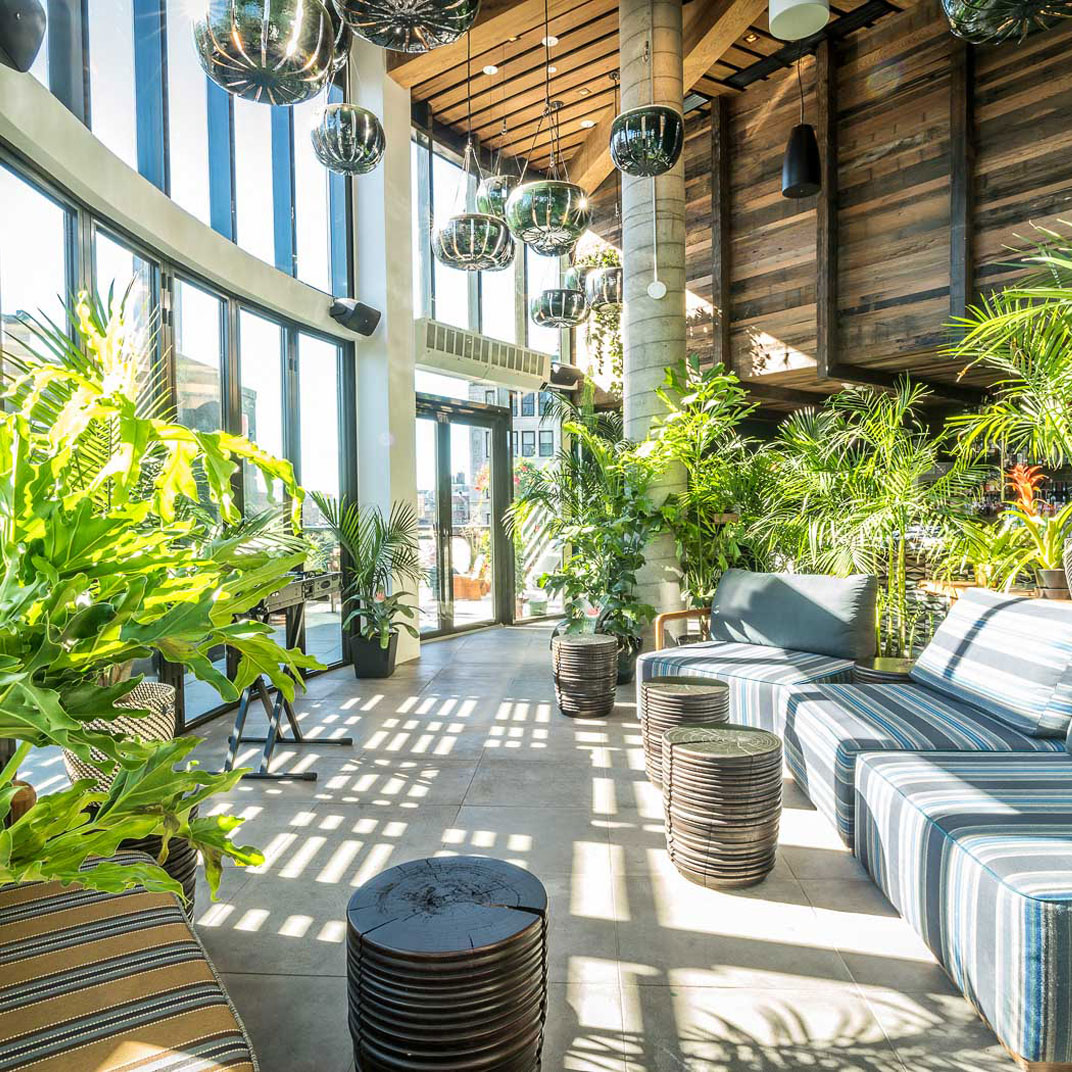
Made Hotel
NoMad
Here’s a hotel that plays against type in NoMad, a neighborhood that’s heavy with historical associations. While many Manhattan hotels are still aiming for a sort of upper-crust prewar atmosphere, MADE Hotel looks like something straight out of present-day Brooklyn. And with its minimalist décor, modernist design, modular fixtures, and unapologetically unfinished surfaces, its rooms look right up to date – like the Williamsburg loft apartment of your design-magazine dreams.
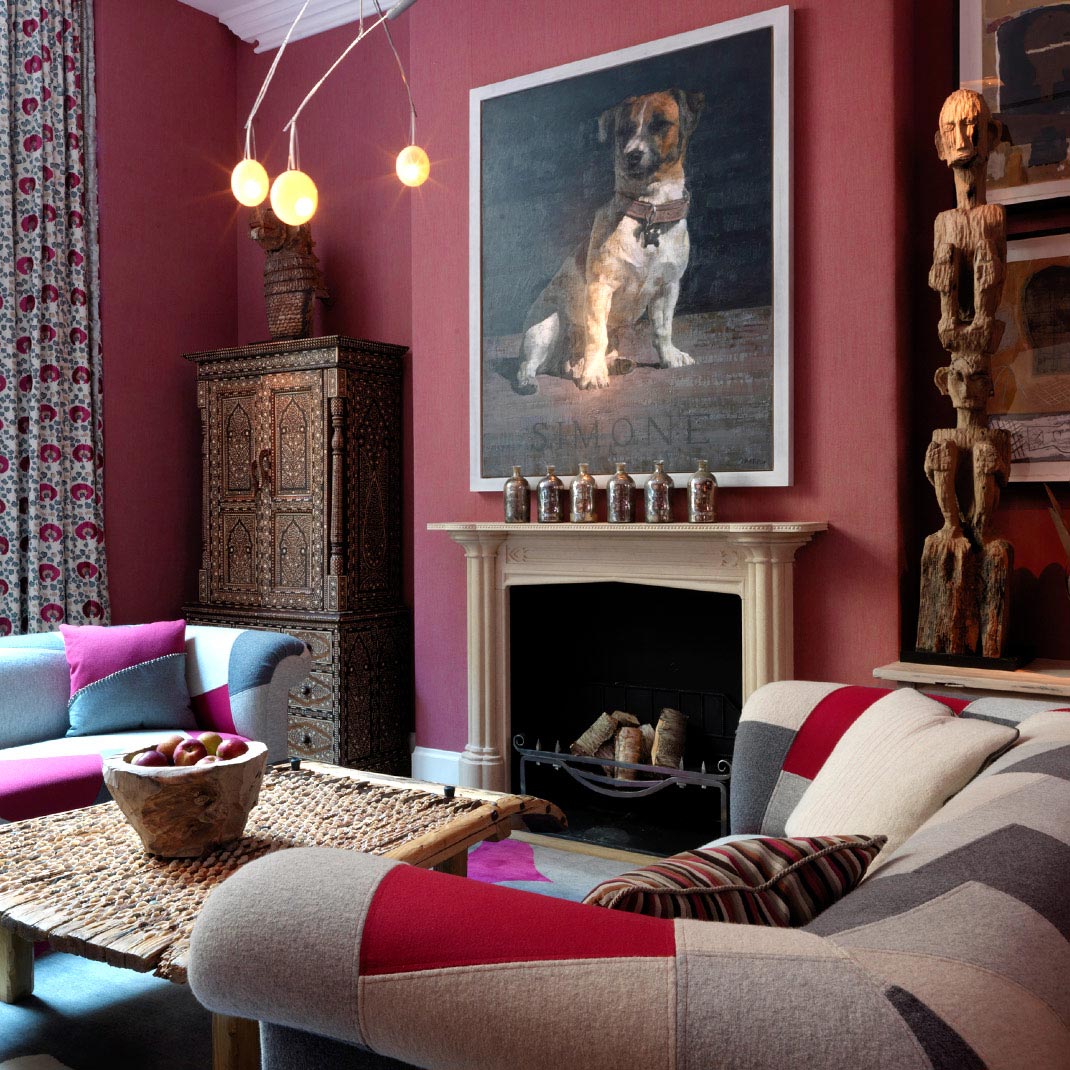
Crosby Street Hotel
Soho
If we didn’t greatly admire the (smallish, intimate, service-oriented) Firmdale philosophy, and consider ourselves huge fans of Tim and Kit Kemp’s design style, we might be less excited about their London-based mini-chain expanding into New York. But a hotel like Crosby Street is exactly what this city needs. The contrast between the downtown grit of the cobblestone street outside and the plush sophistication of the hotel’s lobby is immediate, and striking. Say what you will about the bright colors and the decidedly un-minimal décor — it’s a rare New York boutique these days that presents so opinionated a face to the world.
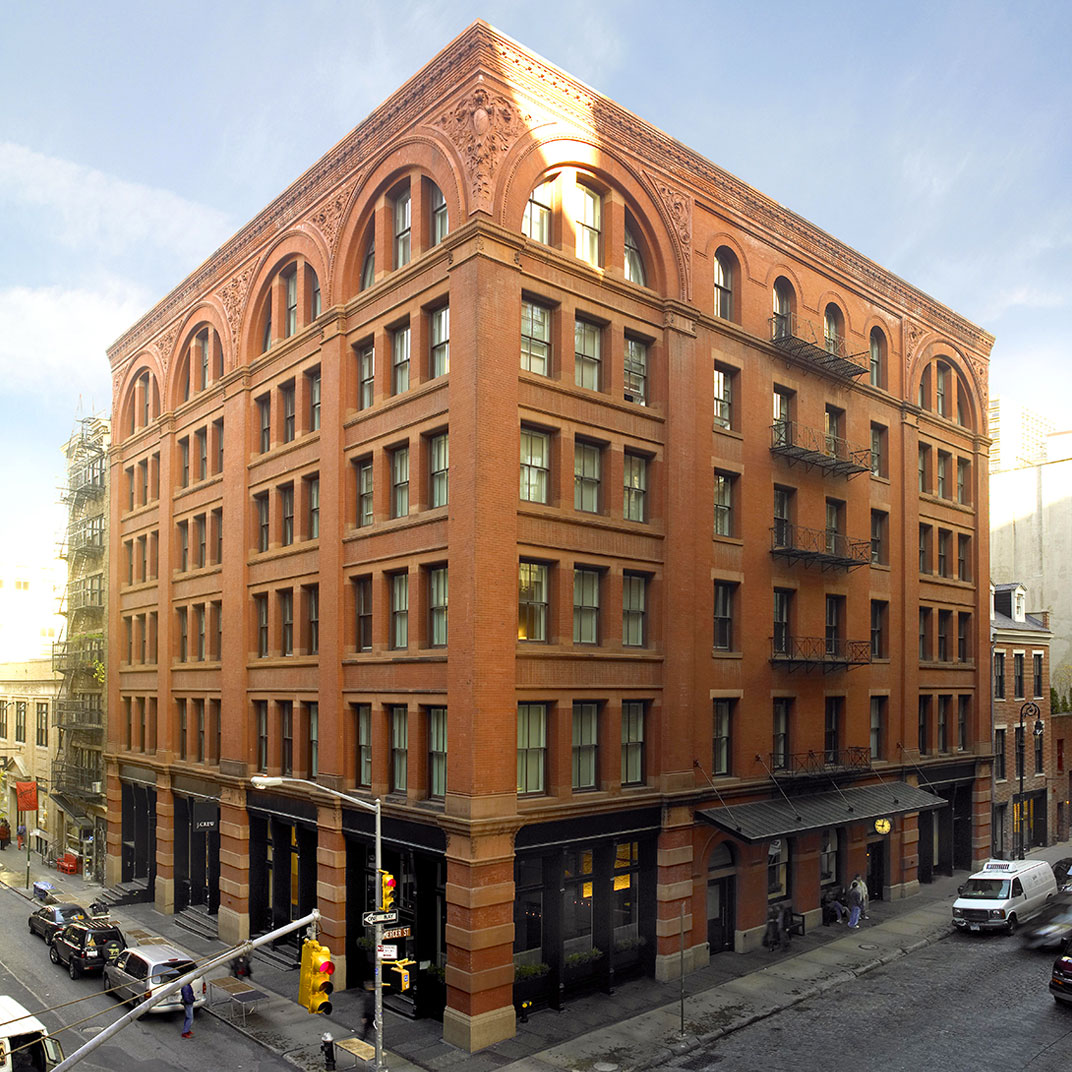
The Mercer
Soho
The first SoHo loft hotel is still the definitive entry in the genre. This 19th-century Romanesque Revival building was filled with artists’ lofts during the neighborhood’s postwar heyday, and its late-’90s renovation at the hands of superstar interior designer Christian Liaigre transformed it into one of the best of the first generation of boutique hotels. And while the competition has multiplied, the Mercer’s never lost its sheen — it’s an André Balazs hotel, which means it’s perennially on the radar of some of the world’s most style-conscious travelers.

The Greenwich Hotel
Tribeca
What do we know about the Greenwich Hotel? It’s got a celebrity owner (none other than Robert DeNiro), a prime Tribeca location, impeccable design credentials courtesy of one of New York’s top firms, Grayling Design, and some truly obsessive construction, having something to do with thousands of very expensive handmade bricks. Now there’s no question that all these things make for great press, but do they mean anything to the guests? Of course they do.
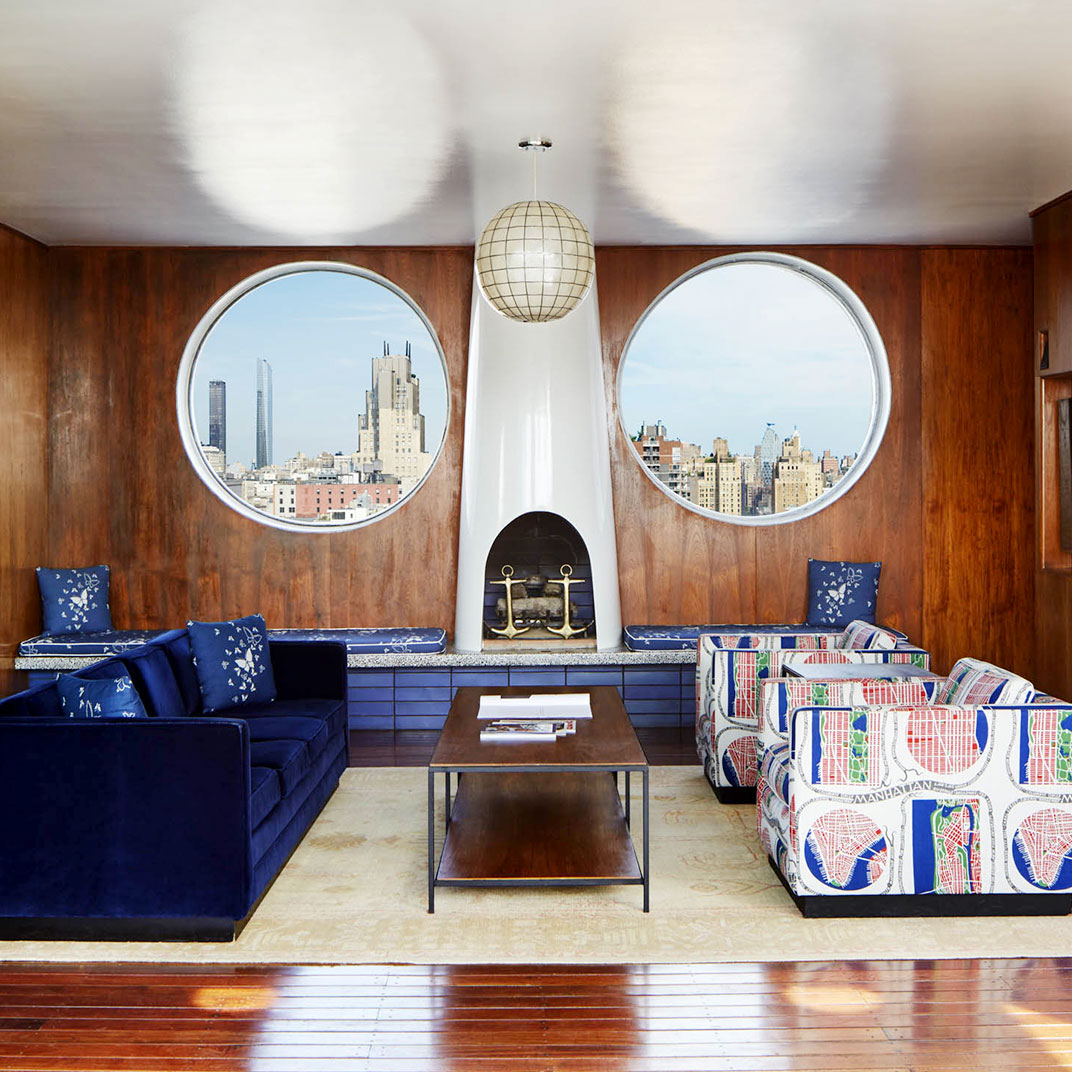
The Maritime
Chelsea
The Maritime Hotel was designed in 1966 for the National Maritime Union; hence its name, and its nautical theme. Today it is one of New York’s hipster hangouts, owing as much to its location (just off the Meatpacking District) as to the charms of the hotel itself. This is not a traditional hotel, by any stretch — all rooms face westward, looking over the Hudson and New Jersey through five-foot porthole windows. The rooms are compact, but well-designed. The décor almost borders on kitsch, but is actually quite charming, if one accepts the ship’s cabin conceit in all its wood-paneled glory.
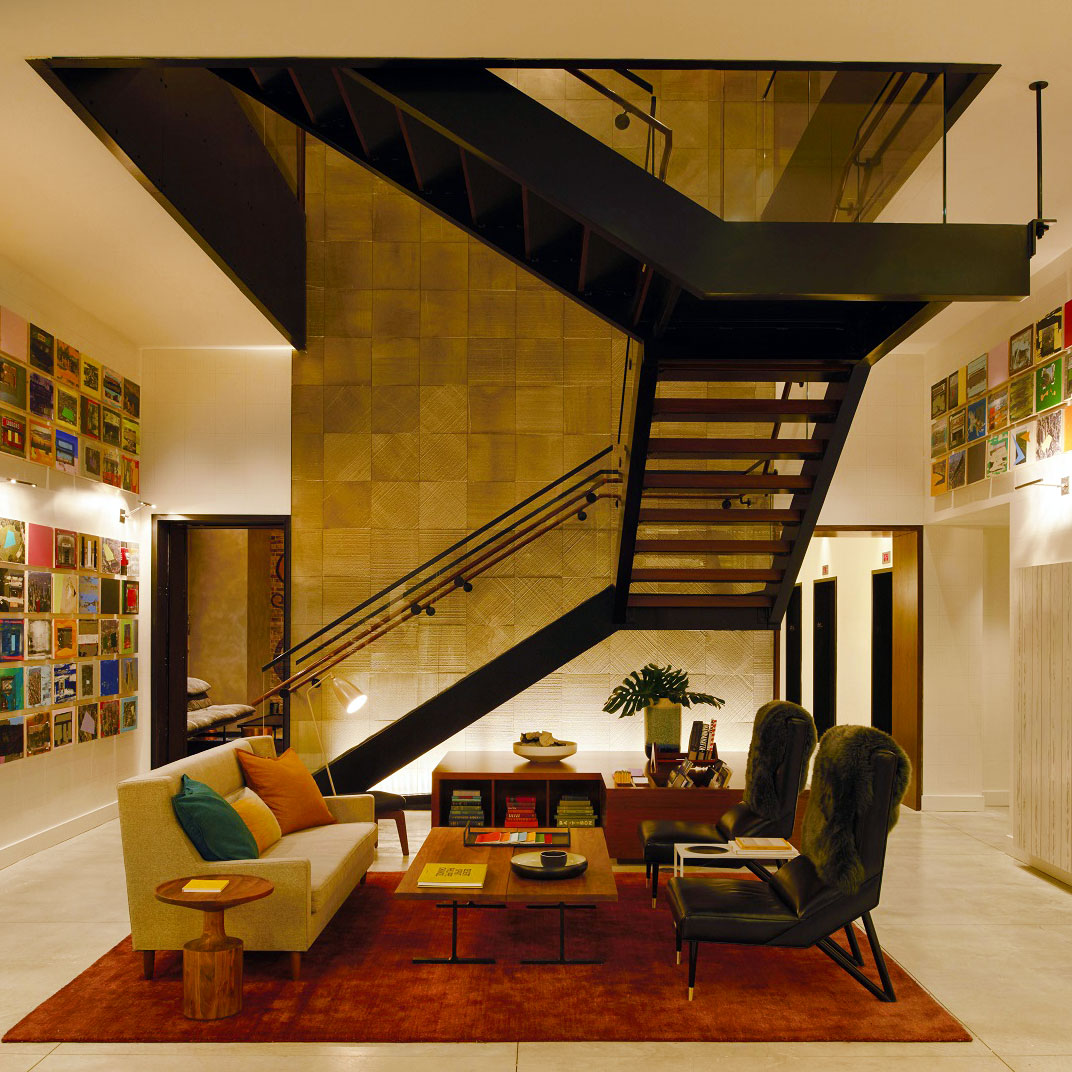
Arlo Nomad
NoMad
New York real estate prices being what they are, you can see why a spacious hotel room can easily run you a month’s rent back home. The flip side of this rule is that an affordable room is often laughably small. The Arlo NoMad, however, goes a long way toward solving the equation — through a combination of clever, compact layouts and the plentiful sunlight afforded by the full-length windows of a brand-new hotel building, its rooms manage to feel livable rather than laughable, in spite of their modest square footage.

The Marlton
Greenwich Village
In the boutique-hotel world, what’s old is new again. In New York Sean MacPherson’s hotels were among the first to turn away from glossy, futuristic minimalism and towards something with a bit more retro romance. So the historically inspired Marlton, the century-old Greenwich Village hotel which once hosted the likes of Jack Kerouac and Julie Andrews, is perfectly in character. It’s also perfectly full of character.
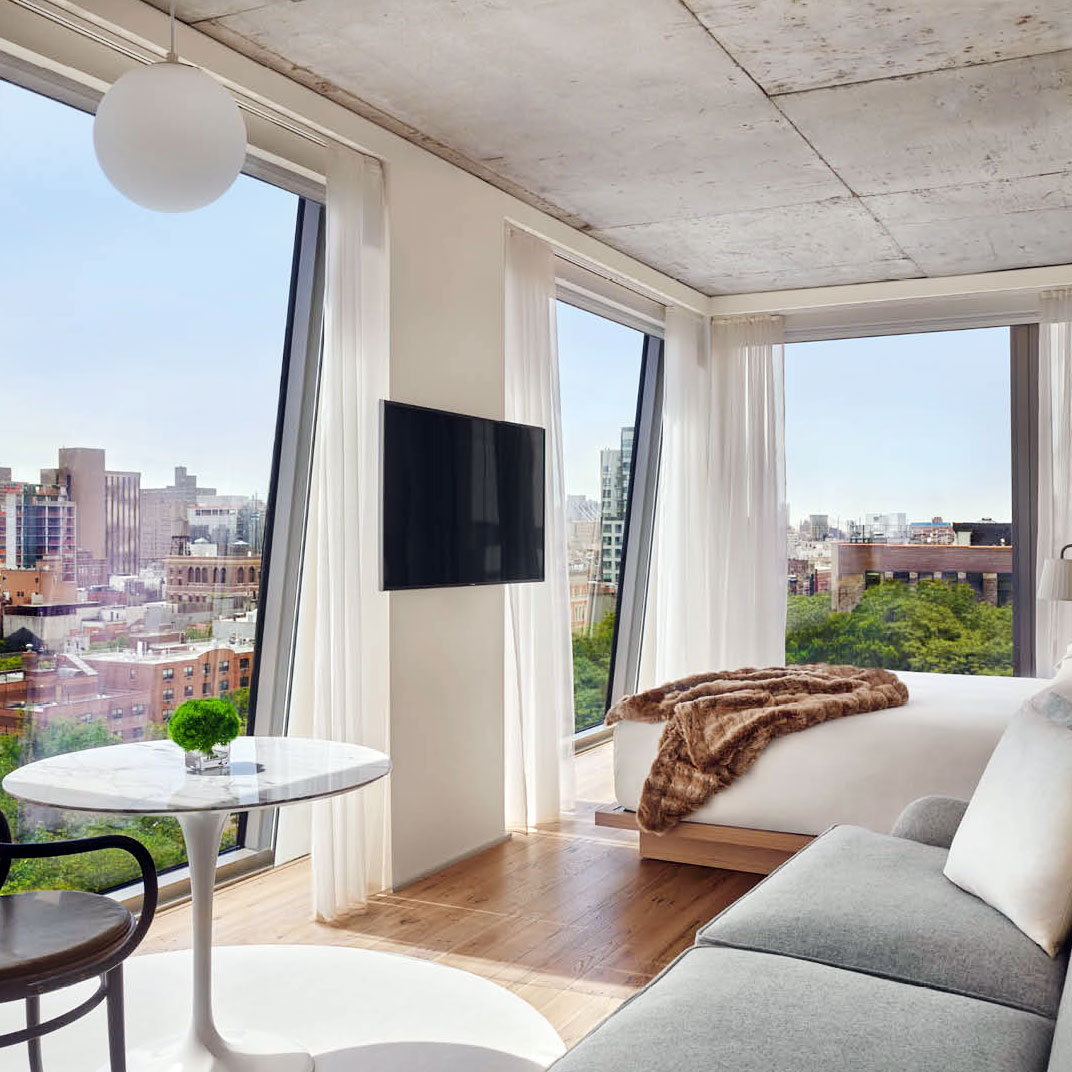
Public
Lower East Side
Ian Schrager is at it again. The boutique-hotel innovator has always been ahead of the curve, and with his nascent PUBLIC brand it’s apparent he’s caught on to something the world’s luxury hoteliers have failed to notice: inclusive is the new exclusive. There’s a little hint there in the name, of course, but it’s apparent that from bottom to top, a place like New York’s PUBLIC is meant to be warm, open, and welcoming — without sacrificing style or excitement. There’s no front desk, but fear not: when you arrive, one of the hotel’s “PUBLIC advisors” will find you and check you in.
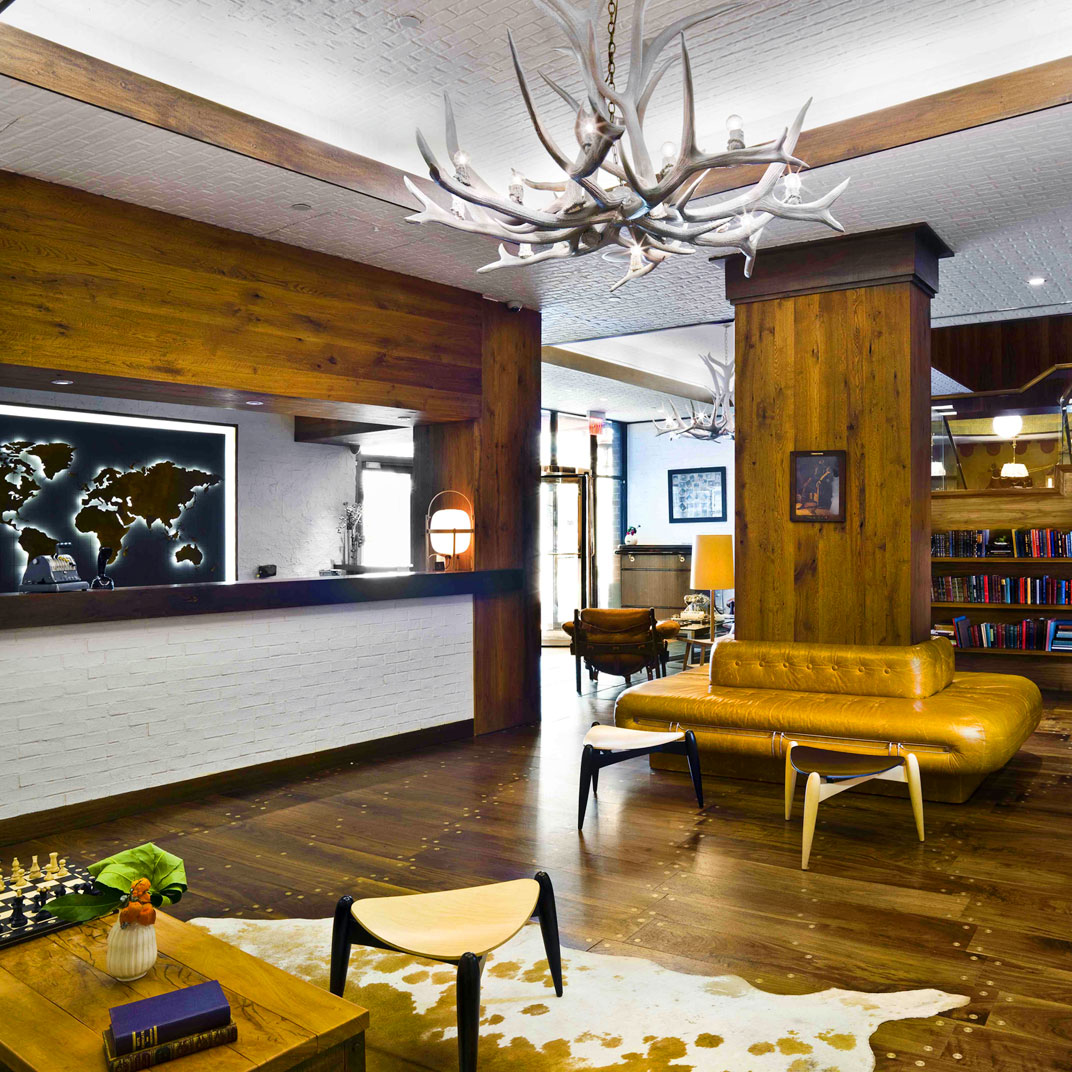
Gild Hall
Financial District
The most notable feature of Gild Hall is its location. Just a few hundred yards from Wall Street, this is deep in the heart of the financial district, a place that not too many years ago used to turn into a ghost town by about seven in the evening. It turns out bankers and brokers have plenty of taste. Forget about tired Nineties minimalism — this place is full of character, right down to the split-level library and champagne bar, complete with fully-functioning books (pages and all) and clubby leather sofas.
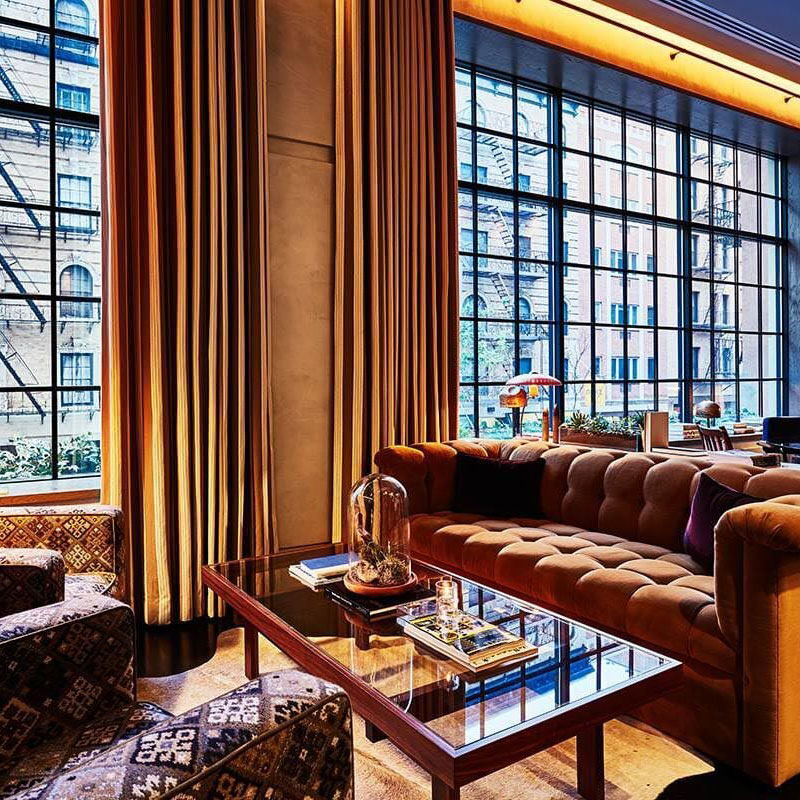
Sixty Soho
Soho
SIXTY SoHo can rightly be called an established classic. The location doesn’t hurt, down one of SoHo’s swankier streets, and a multi-million-dollar renovation by the London-based designer Tara Bernerd has left the interiors looking more vibrant than ever. The soaring loft-style guest rooms are still as quintessentially downtown as they come, equal parts luxury-hotel sheen and boutique-hotel funk, with high-end Italian linens and bathrooms that manage to be decadent and heavily marbled and yet youthfully stylish at the same time.
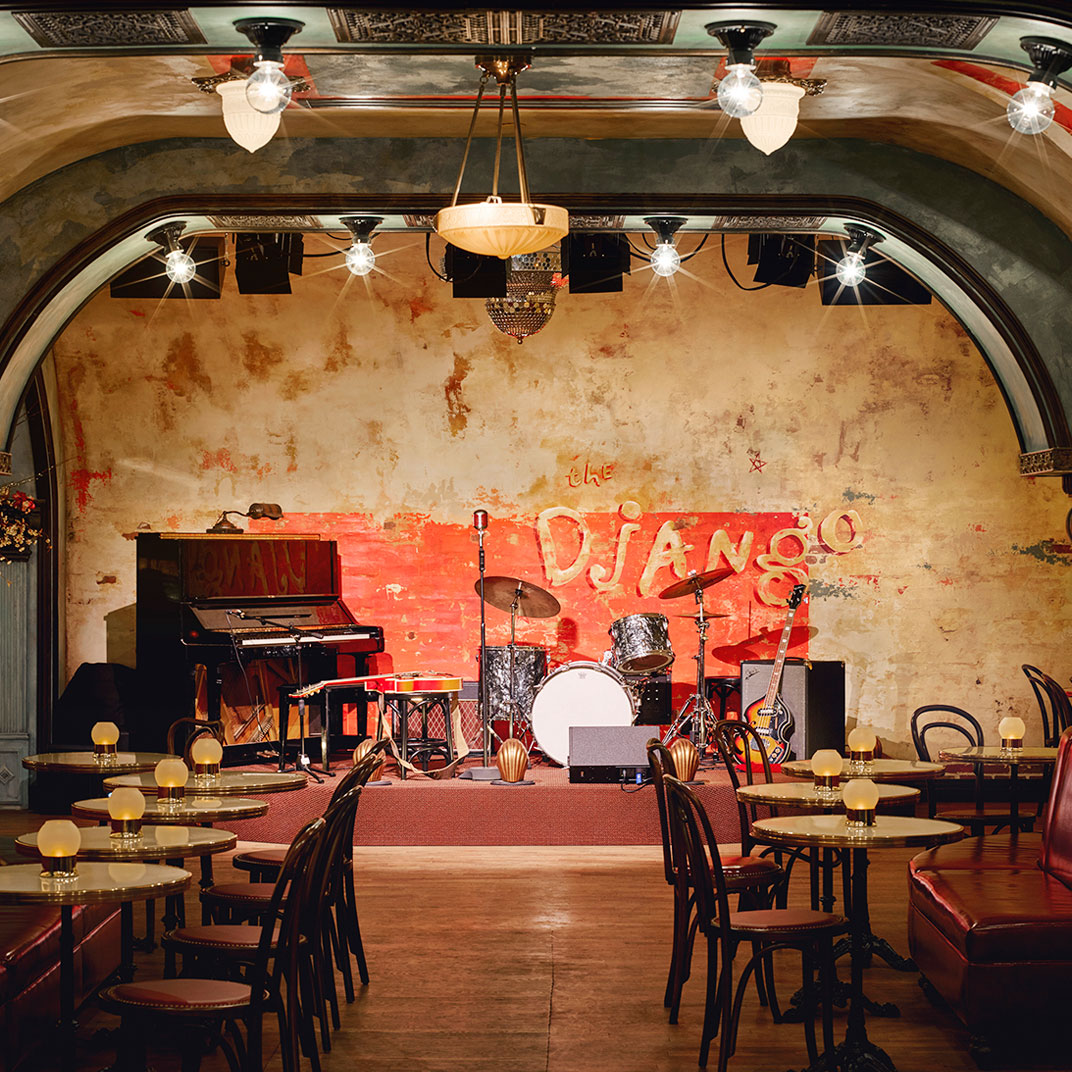
The Roxy
Tribeca
Tribeca is one of Manhattan’s oddest blends, a district mixing the arty downtown cool of Soho with the big-money sheen of the financial district, the spot where 19th-century cobblestones meet sleek industrial architecture, with a dash of bright light courtesy of the sun going down over the Hudson (not to mention several of New York’s best restaurants). Perfectly exemplifying this blend of high gloss and arty edge is the Roxy Hotel Tribeca.
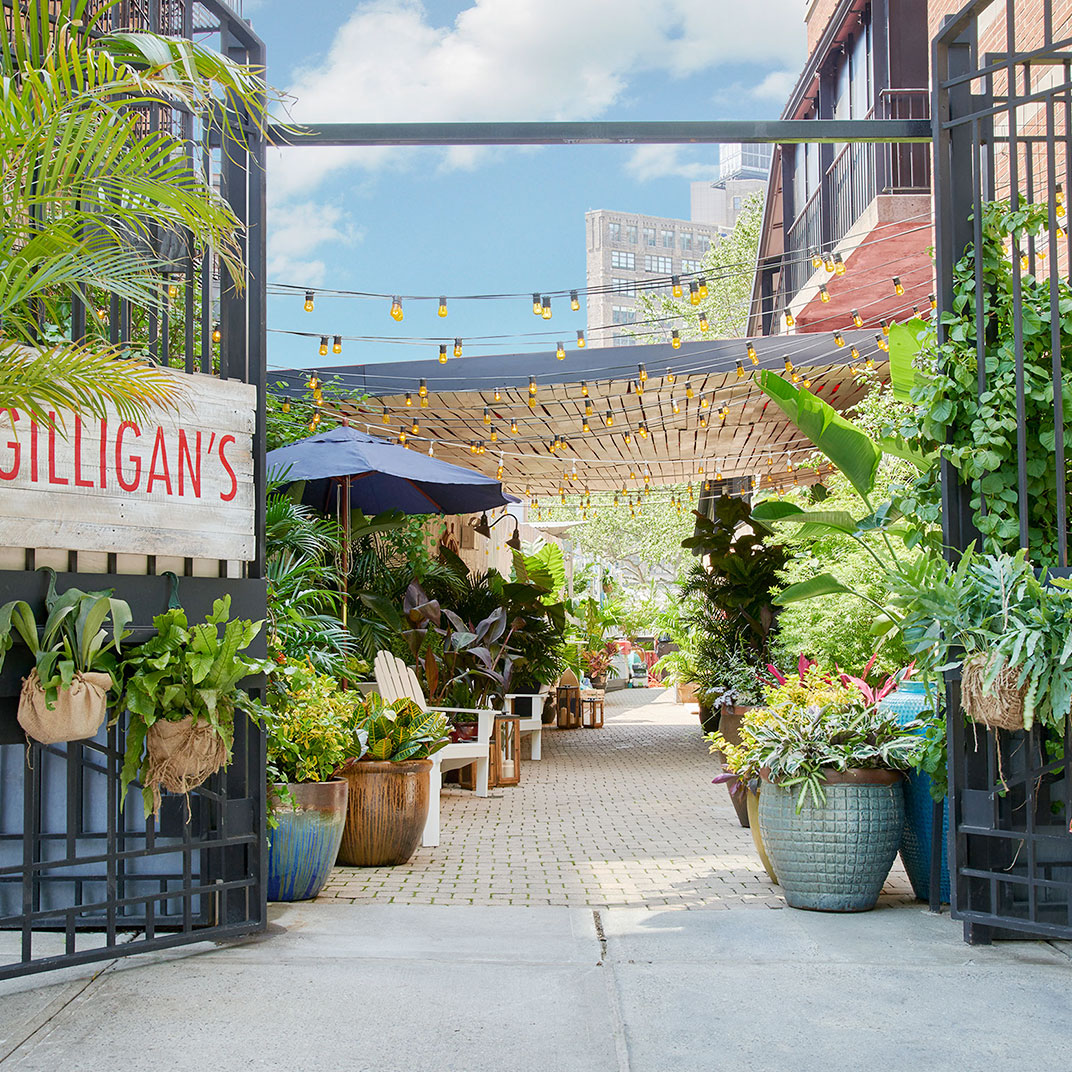
Soho Grand
Soho
When it opened in 1996, the Grand was the first big SoHo hotel, and its downtown location has continued to be a major factor in its identity. Take the concierges, who can get you a reservation at the hottest underground restaurant and fill you in on the hippest goings-on. Here’s where you’ll find Tokyo urbanites in platforms, tough-talking London businessmen on their cells, lanky Nigerian models, many rock and roll musicians, and a lot of crazy hair. It’s easy for that much hipness to be intimidating, but the Grand, despite its name, is warm and happy.
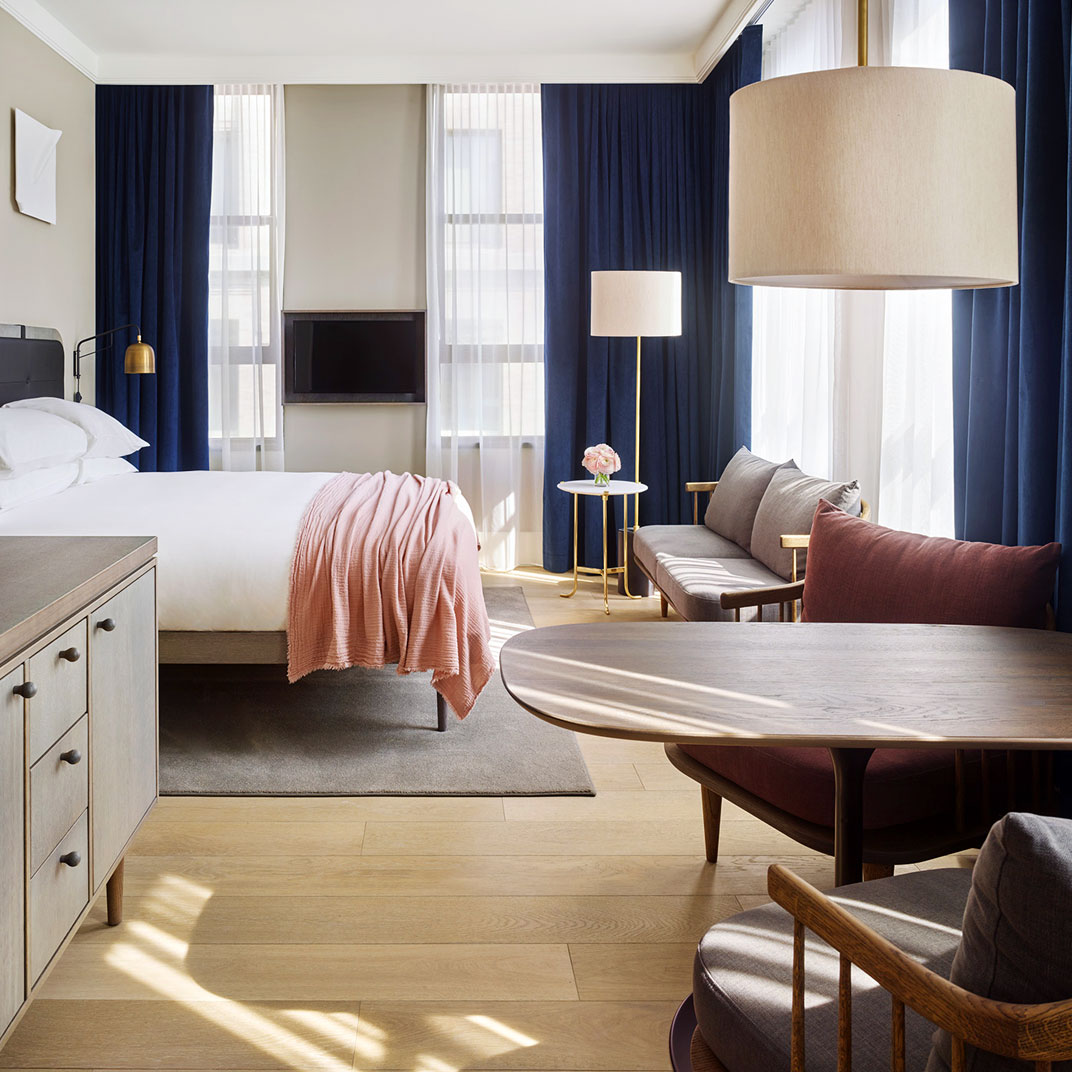
11 Howard
Soho
At 11 Howard, contemporary Scandinavian design meets a more inclusive, less ostentatious version of luxury hospitality. It’s the first independent hotel project for architect Anda Andrei, after decades as the designer behind Ian Schrager’s path-breaking boutique-hotel projects. Produced in collaboration with Danish designers Space Copenhagen, 11 Howard avoids the sort of wall-to-wall bling that’s sometimes synonymous with New York hotels. And this one puts a bit of money where its egalitarian ideals are, as well — they call it “conscious hospitality,” which in concrete terms means passing on a share of revenue to charities like the Global Poverty Project.
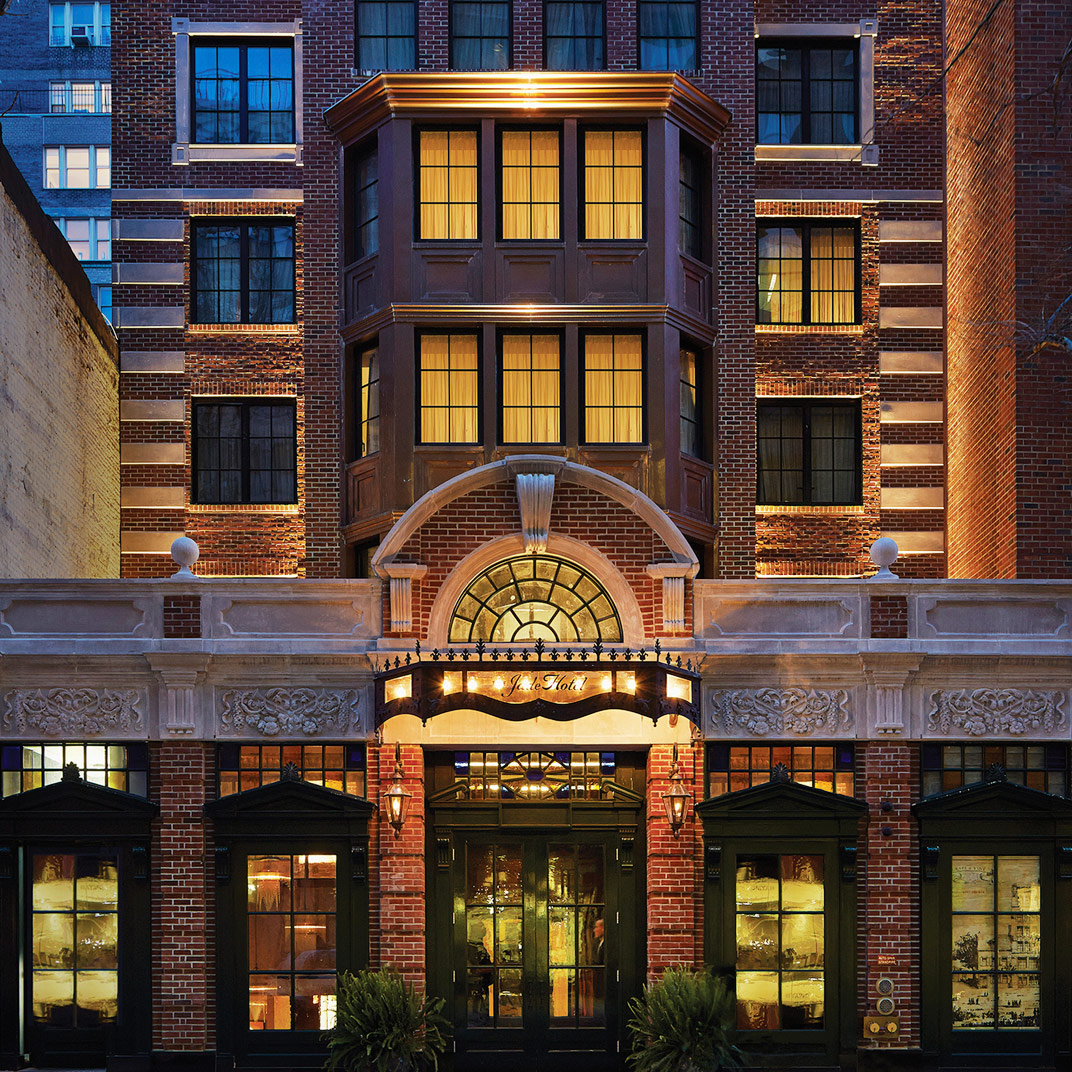
Walker Hotel
Greenwich Village
Judging by the present state of things in the New York boutique-hotel scene, bohemian is the new minimal, and clean lines have been supplanted by eclectic vibes. What’s puzzling, though, is that it took this trend so long to hit Greenwich Village, arguably the eclectic-vibes capital of Manhattan. No matter; it’s here now, and its 13th Street exemplar, the Walker Hotel Greenwich Village, does its level best to pay tribute to its neighborhood. This means classic Georgian architecture, plush, romantic interiors liberally festooned with velvet, and bookshelves in the lobby liberally festooned with volumes by West Village writers.
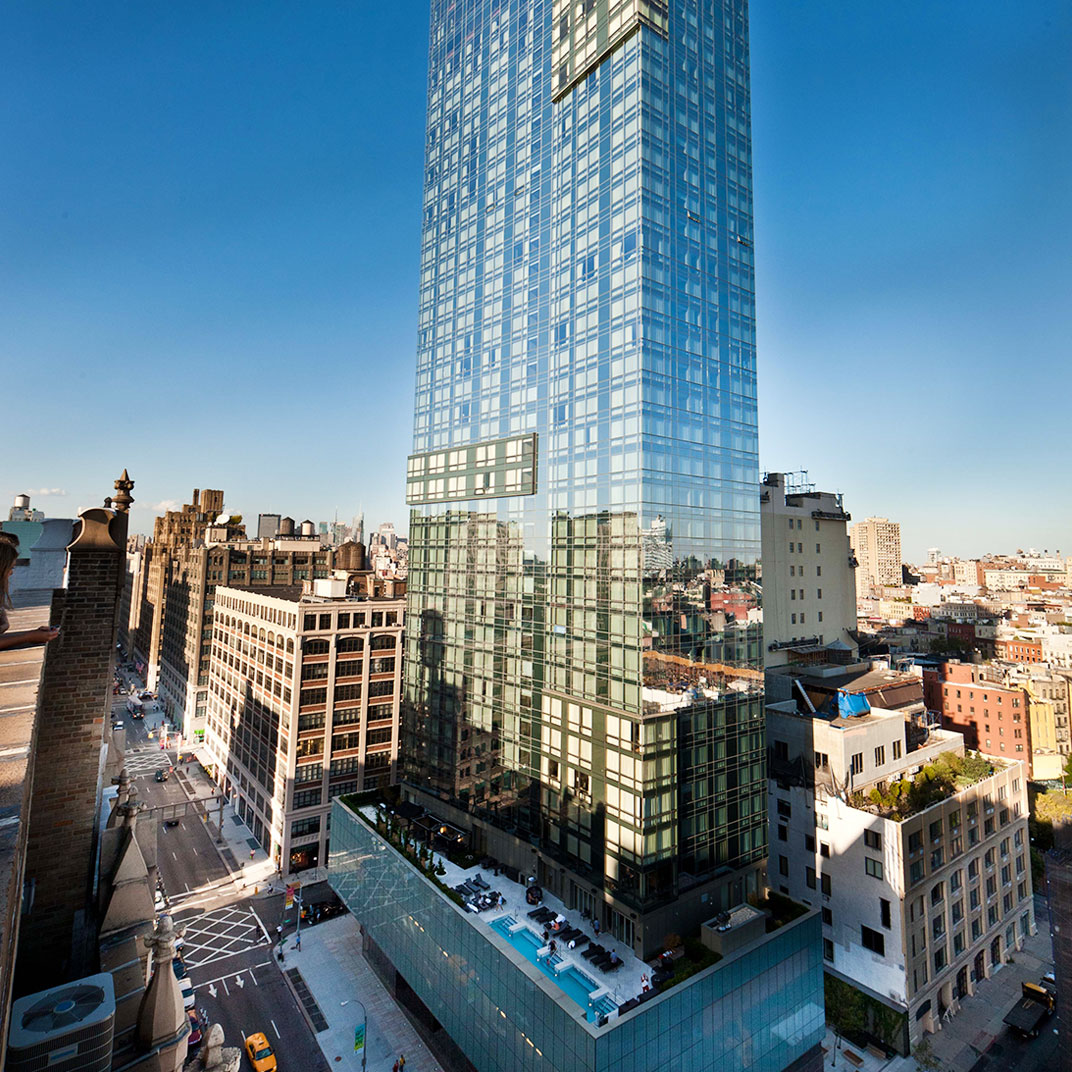
The Dominick
Soho
F. Scott Fitzgerald may have said that there are no second acts in American life, but we can all think of plenty of exceptions. The Dominick may have had a troubled past, thanks in no small part to the involvement of our nation’s most famously divisive real-estate developer, but the slate has been wiped clean — it’s got some new owners, it’s been given a new name, and now this Soho stunner is ready to be seen for what it is: a stylish, luxurious boutique hotel with a stellar Spring Street location and commanding views of downtown Manhattan and the Hudson River.
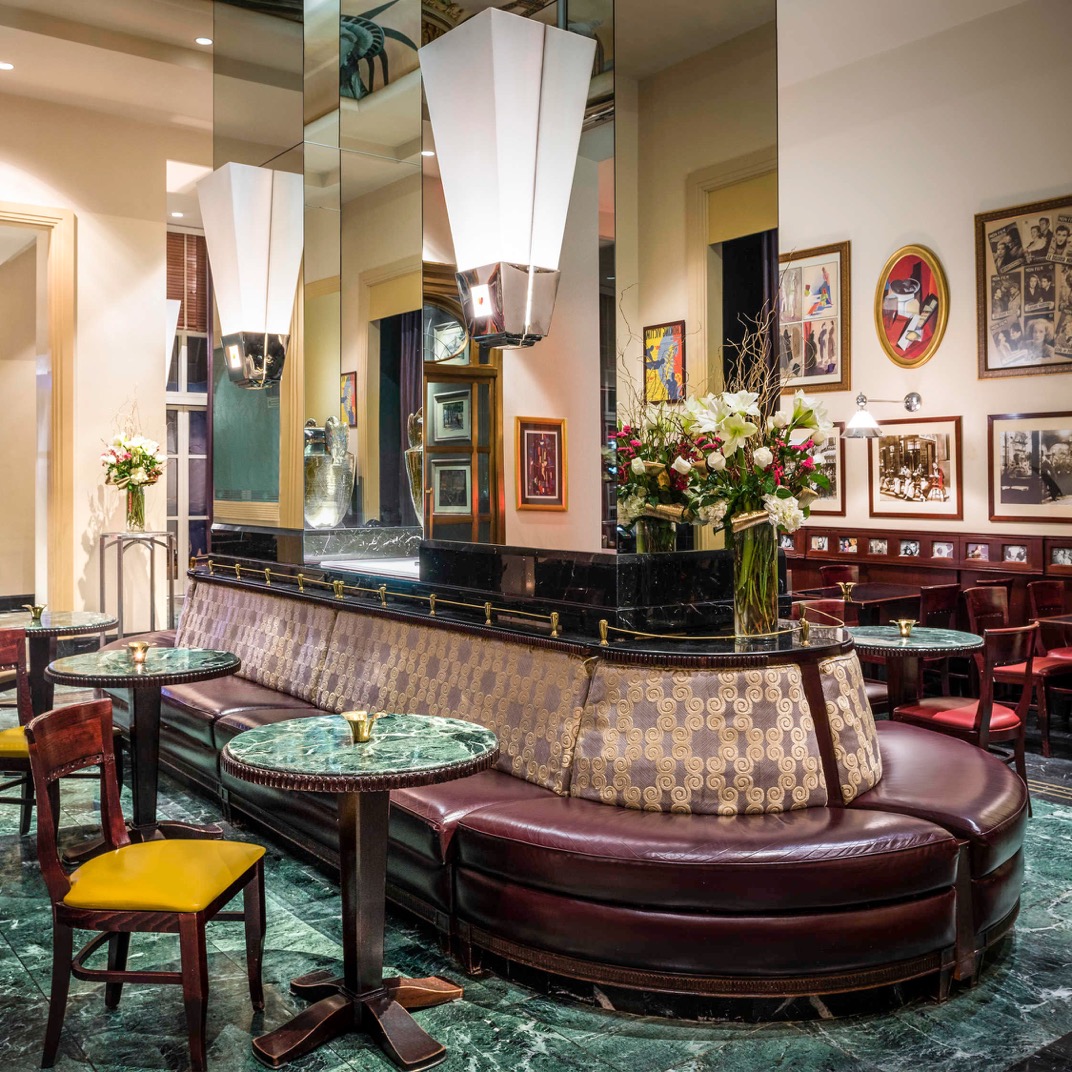
Sofitel New York
Midtown
For a big-business hotel chain, Sofitel seems to have it pretty well figured out — the consistent quality of a corporate hotel, but with the personality too many others lack, and an aesthetic sense that we may as well just go ahead and describe as Parisian, as long as we’re not shying away from cultural stereotypes. Inside Sofitel New York’s curvaceous glass tower there are just shy of four hundred rooms, most of which have some sort of dramatic view or another. The rooms are handsome, but far from over-designed, and comfortable verging nearly on luxurious.
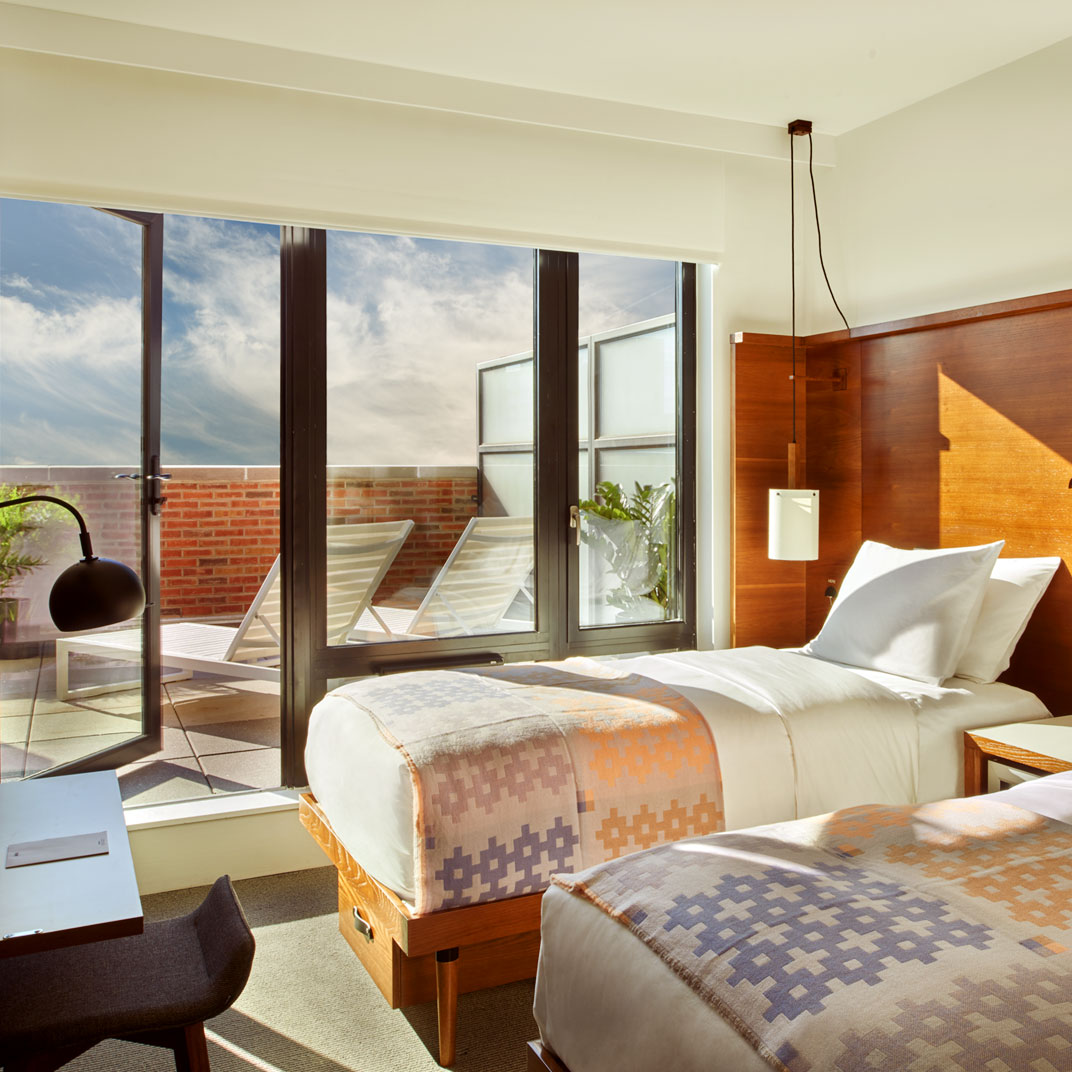
Arlo Soho
Soho
New York is always evolving. Not all that many years ago, Hudson Square was a bit of a non-place, a nameless district bordering SoHo, Tribeca, and the West Village. But give people a reason to visit, and a neighborhood is born. Arlo Soho got in early, before the rush of development, and the frugality of its developers enables it to offer modern boutique style at a price that would normally get you — well, we don’t even want to think about what, but certainly not that.
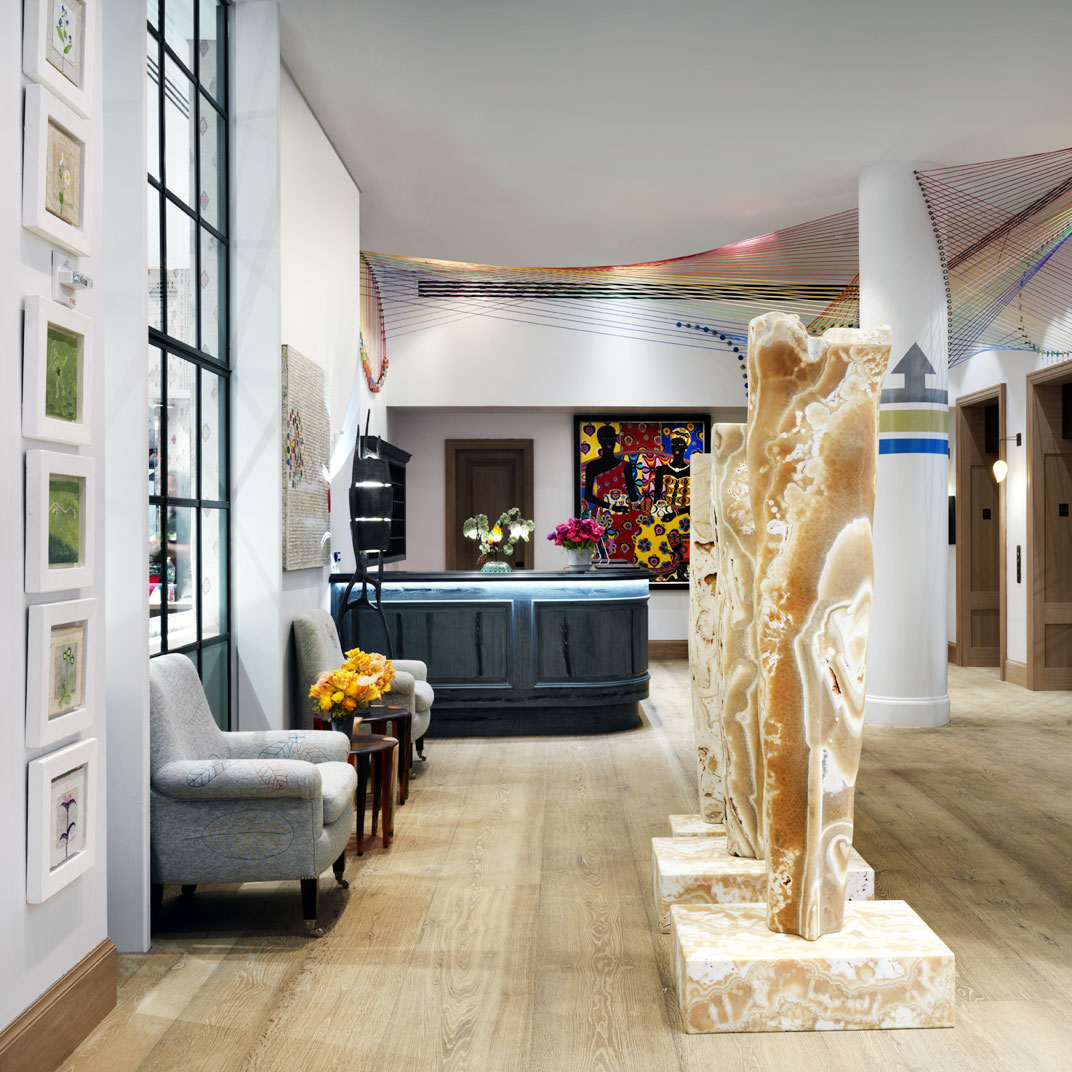
The Whitby
Midtown
Firmdale, the proprietors of Soho’s fine Crosby Street Hotel (as well as too many London hotels to mention), is at it again, this time in Midtown, just two blocks from Central Park. The Whitby Hotel brings the warmth and coziness of English hospitality to a neighborhood that’s already got plenty of American-style luxury hotels, and proves that Firmdale can compete with anyone in the world on comfort, and look just that much more stylish and charming while they’re at it.


